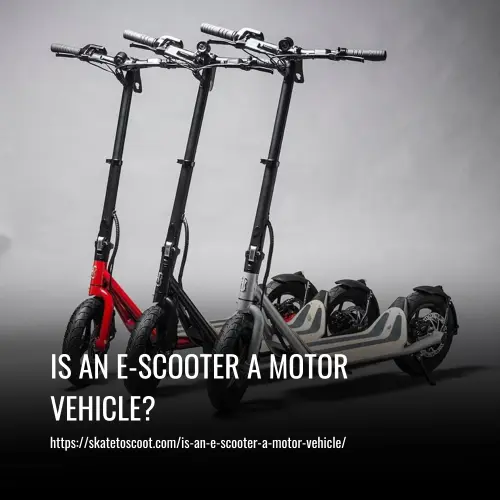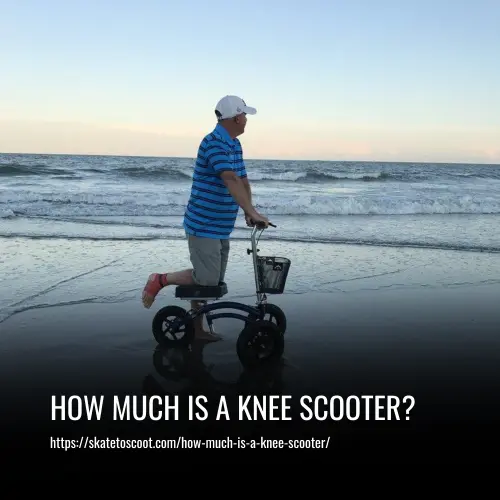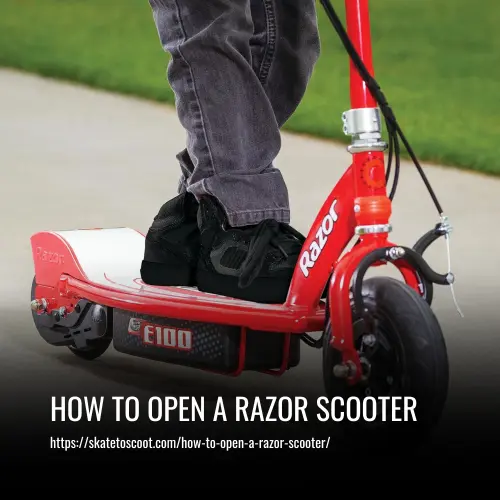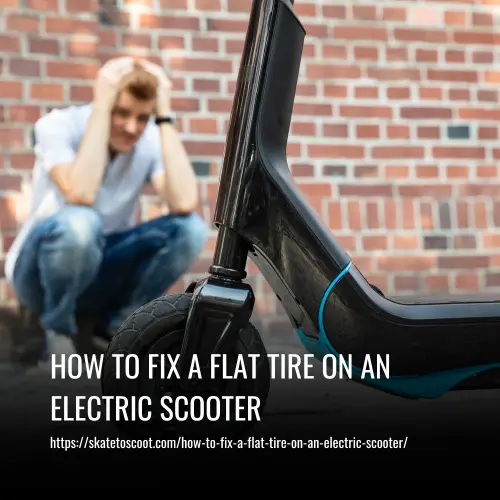As an Amazon Associate we earn from qualifying purchases.
An electric scooter is considered a motor vehicle as it is powered by an electric motor. This classification subjects it to traffic laws and regulations, meaning that in order to operate it on a road or pavement, it may need to be insured.
The specifics of these legal requirements, such as minimum age requirements, vehicle registration, and license plate requirements, can vary from city to city and are often based on factors like the maximum speed limit and the flow of traffic on different streets.
Therefore, it is important for electric scooter riders to familiarize themselves with the relevant traffic rules and regulations in their jurisdiction to ensure they are in compliance and can safely navigate alongside other vehicles and pedestrians.

Definition of Motor Vehicle Under Traffic Laws
In most jurisdictions, a motor vehicle is generally defined as any self-propelled vehicle that operates on public roads and is powered by an electric motor, gasoline engine, or any other form of propulsion. This definition typically includes cars, trucks, motorcycles, buses, and mopeds. However, the categorization of electric scooters as motor vehicles varies by jurisdiction.
While some places consider electric scooters as motor vehicles due to their electric motor power, others classify them differently. In certain areas, electric scooters are classified as low-speed electric scooters or motorized scooters and are subject to specific regulations governing their use. These regulations often include age restrictions, speed limits, registration requirements, and the necessity for a valid driver’s license to operate them.
It is important for users to understand the specific laws and regulations that apply to electric scooters in their area. This may include adhering to traffic signals, using designated bike lanes or paths, and respecting the flow of traffic.
Additionally, helmet use and maximum speed limits may also be enforced to ensure safety on public roads. Users should consult their local traffic laws and regulations to determine the legal requirements for operating an electric scooter in their city or region.
Types of Motor in Electric Scooter
There are two types of motors commonly used in electric scooters: brushed direct current (DC) motors and brushless DC electric motors. Brushed DC motors have an inner rotor design with brushes and a commutator to generate rotational motion. These motors are generally less expensive and simpler in design but require regular maintenance due to brush wear.
On the other hand, brushless DC electric motors have an outer rotor design and do not use brushes or a commutator. They are more efficient, have a higher power-to-weight ratio, and require less maintenance. Overall, the choice of motor type in an electric scooter depends on factors such as cost, performance, and maintenance preferences.
Where is the Motor on an E Scooter
The motor on an e-scooter is typically built into the hub of one or both wheels. Adult electric scooters, such as the powerhouse Wide Wheel model, often have dual motors with a wattage of around 500 watts each.
These motors are brushless direct current (BLDC) electric motors, which provide power to propel the scooter forward. By being integrated into the wheels, the motor ensures an efficient and compact design, allowing for a smooth and effortless riding experience.
What Does Electric Scooter Motor Do
The electric scooter motor serves as the powerplant for the scooter, generating the power that propels the vehicle forward. The motor determines various aspects of the scooter’s performance, including acceleration, maximum speed, hill-climbing ability, overall performance, and power consumption.
It plays a crucial role in determining the efficiency and effectiveness of the scooter, ensuring a smooth and reliable ride for the rider. The motor is responsible for converting electrical energy into mechanical energy, enabling the scooter to move and function as intended.
Can You Use an Electric Scooter without the Motor
Electric scooters are primarily designed to be used with the motor, and they are not very suitable for manual use. This is mainly due to their weight, which can range from 12kg to 55kg. The motor in an electric scooter assists in propelling the vehicle forward, making it difficult to push or ride without it.
Therefore, it is not recommended to use an electric scooter without the motor as it may be cumbersome and uncomfortable.
FAQs
Motor vehicles typically refer to any self-propelled vehicle, including cars, motorcycles, trucks, buses, and even certain types of bicycles. They are commonly used for transportation purposes and are subject to various traffic laws and regulations.
Yes, electric scooters are typically considered motor vehicles and are subject to traffic laws. The exact regulations may vary depending on the jurisdiction, but generally, electric scooter riders must adhere to rules such as obeying traffic signals, riding in designated bike lanes or paths when available, and following the same speed limits as other motor vehicles.
Yes, state and local governments have the authority to regulate the use of electric scooters. This gives them the power to impose specific rules and requirements, such as minimum age requirements, helmet usage, and where electric scooters can be ridden. It’s important to familiarize yourself with the laws and regulations in your specific area.
Electric scooters are typically designed for lower speeds compared to cars and motorcycles. Most electric scooters have a maximum speed range of around 10 to 25 miles per hour. However, it’s important to note that specific speed limits may vary depending on the jurisdiction and the type of road being traveled.
Yes, there is usually a maximum speed limit for electric scooters on public roads. The maximum speed can vary depending on the location, with some areas allowing electric scooters to travel up to the posted speed limit for motor vehicles, while others may have lower speed limits specifically for electric scooters.
Conclusion
In conclusion, electric scooters are generally considered motor vehicles and are subject to traffic laws and regulations. State and local governments have the authority to regulate their use, including setting age requirements and designating where they can be ridden. While electric scooters are designed for lower speeds compared to cars and motorcycles, specific speed limits may vary depending on the jurisdiction and the type of road.
It is important for electric scooter riders to familiarize themselves with the laws and regulations in their specific area to ensure they are riding safely and legally. As the popularity of electric scooters continues to grow, it is likely that there will be ongoing discussions and revisions to the laws surrounding their use. Therefore, it is crucial for riders to stay informed and stay up to date with any changes in order to ride responsibly on public roads.
Amazon and the Amazon logo are trademarks of Amazon.com, Inc, or its affiliates.



